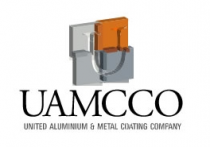Global Aerospace Sheet Distribution Market (2021 to 2026) - Size, Share, Trend, Forecast, Competitive Analysis, and Growth Opportunities - ResearchAndMarkets.com
The "Aerospace Sheet Distribution Market Size, Share, Trend, Forecast, Competitive Analysis, and Growth Opportunity: 2021-2026" report has been added to ResearchAndMarkets.com's offering.
The aerospace industry faced momentary hurdles in 2019 and was expecting to start rebounding from 2020 onwards. However, the sudden outburst of the pandemic trashed the market participants' hopes of recuperation. The grave impact of the pandemic was felt across markets in the aerospace industry.
The aerospace sheet distribution market could not escape from the pandemic's wrath suffered a debilitating loss of over 30% in 2020. The unforeseen circumstances amid the pandemic shook the industry stakeholders to the core. Nevertheless, the resilient aerospace industry is likely to recoup from 2021 onwards, gradually and steadily heading towards a full recovery, a couple of years later. A similar impact is expected to reflect in the aerospace sheet distribution market, which is estimated to heal at a promising CAGR of 8.5% during the forecast period to reach US$ 614 million by 2026.
Cased on the platform type, the market is segmented as commercial aircraft, regional aircraft, general aviation, military aircraft, helicopter, and spacecraft. Commercial aircraft is projected to remain the largest as well as the fastest-growing segment of the market during the forecast period, even though the segment took a massive plunge in 2020. Rapidly recovering demand and production of aircraft, probable market entry of new aircraft such as C919 sooner rather than later, and an incessant requirement of mill products best suiting the application at hand, are the key reasons behind the segment's healthy growth in the long run.
Based on the material type, the market is segmented as titanium & alloys, aluminum & alloys, steel & alloys, and others. Aluminum & alloys grabbed the throne in the market in 2020 and are expected to maintain their indubitable lead throughout the forecast period. Aluminum sheets are more often used for aircraft fuselage and pressure cabin skins as they offer high-damage tolerance and a fair level of strength. On the other hand, titanium & alloys are likely to log the highest growth till 2026. There has been an increasing preference of OEMs/tier players to procure all materials including sheets, the most dominant material category, from distributors in order to have a smooth raw material supply.
Key Players
- TW Metals
- Reliance Metals Co
- Hadco Metal Trading
- A.M Castle & Co
- Thyssenkrupp AG
- United Performance Metals
- Titanium Industries, Inc
Key Topics Covered:
1. Executive Summary
2. Aerospace Sheet Distribution Market Environment Analysis
2.1. Supply Chain Analysis
2.2. PEST Analysis
2.3. Industry Life Cycle Analysis
2.4. Market Drivers
2.5. Market Challenges
3. Aerospace Sheet Distribution Market - The COVID-19 Impact Assessment
3.1. Aerospace Sheet Distribution Market Trend and Forecast (US$ Million and Million Lbs.)
3.2. Pre-COVID vs Post-COVID Assessment
3.3. Real GDP Loss vs Aerospace Sheet Distribution Market Loss (2020-2021)
3.4. Market Scenario Analysis: Pessimistic, Most Likely, and Optimistic Scenarios
4. Aerospace Sheet Distribution Market Assessment (2015-2026)
4.1. Platform-Type Analysis
4.2. Material-Type Analysis
4.3. Shape-Type Analysis
4.4. Regional Analysis
5. Competitive Analysis
5.1. Market Consolidation Level
5.2. Competitive Landscape
5.3. Market Share Analysis
5.4. Product Portfolio Analysis
5.5. Geographical Presence
5.6. New Product Launches
5.7. Strategic Alliances
5.8. Porter's Five Forces Analysis
6. Strategic Growth Opportunities
6.1. Market Attractiveness Analysis
6.1.1. Market Attractiveness by Platform Type
6.1.2. Market Attractiveness by Material Type
6.1.3. Market Attractiveness by Shape type
6.1.4. Market Attractiveness by Region
6.1.5. Market Attractiveness by Country
6.2. Growth Matrix Analysis
6.3. Strategic Implications
6.4. Key Success Factors (KSFs)
7. Company Profile of Key Players
8. Appendix
For more information about this report visit https://www.researchandmarkets.com/r/b9rfri
View source version on businesswire.com: https://www.businesswire.com/news/home/20211130005846/en/





